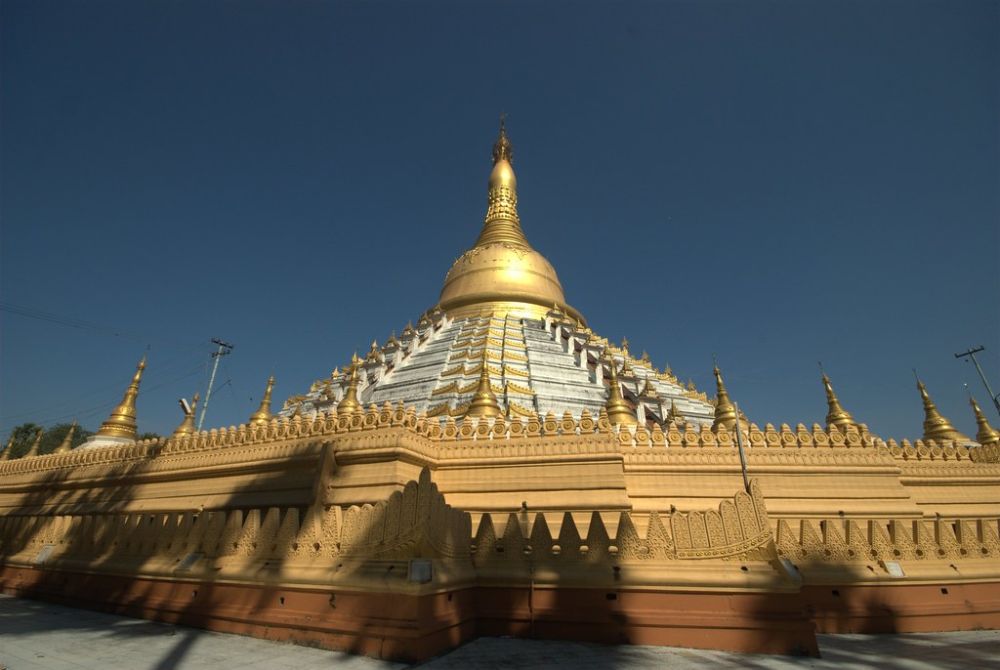

The Mahazedi Pagoda, situated in Bago (formerly Pegu), is one of Myanmar's most revered cultural and historical landmarks. It was built in 1560 by King Bayinnaung, one of the most powerful monarchs of the Toungoo Dynasty, as a monument to his return from Ceylon (now Sri Lanka) after ordaining as a Buddhist monk. Throughout its history, the pagoda has been a testament to the profound Buddhist traditions and the architectural marvels of ancient Burmese kingdoms.
The Mahazedi Pagoda once enshrined a tooth-relic from the Buddha, establishing its importance as a pilgrimage site. Over the centuries, the pagoda has withstood numerous wars, earthquakes, and the ravages of time. Although it was partially destroyed during the 1757 invasion by the Mon people, King Bodawpaya restored it in the late 18th century. This restoration work gave the pagoda renewed significance and solidified its status as a symbol of cultural resilience.
The Mahazedi Pagoda has long been a pilgrimage destination for devout Buddhists and a site of curiosity for historians, but it was not until the early 20th century that the site began to attract international tourists. With Myanmar's gradual opening up to international tourism in the late 20th and early 21st centuries, the pagoda has seen a steady increase in visitors interested in both its religious significance and historical architecture.
As a result of the tourism industry's growth, infrastructural developments and preservation efforts have been implemented around Bago to accommodate visitors. This includes the establishment of visitor centers, guided tours, and local markets selling traditional crafts. The increased foot traffic, however, has also brought attention to the need for sustainable tourism practices to protect the integrity of the pagoda and the surrounding area.
Experiential Travel: Today's tourists are seeking more immersive experiences, prompting local tour operators to offer activities focused on cultural exchange, meditation retreats, and historical lessons at the Mahazedi Pagoda.
Eco-tourism: Growing environmental consciousness has led to an emphasis on eco-friendly travel. Tourists are now more aware of their carbon footprint and are seeking out environmentally responsible ways to enjoy the Mahazedi Pagoda's splendors without causing harm.
Digital Influence: With the rise of social media, the Mahazedi Pagoda has gained visibility as visitors share their experiences online, attracting a global audience and fostering a digital footprint that encourages tourism.
Recent political events in Myanmar have had a significant impact on the tourism sector. Travel restrictions and safety concerns have affected the overall number of tourists visiting the country. Nonetheless, the Mahazedi Pagoda remains an important site of interest for its historic and cultural value and will likely continue to be a focal point for tourism in Myanmar, as circumstances allow.